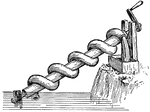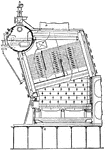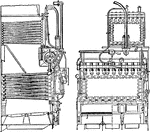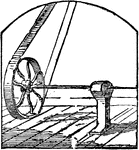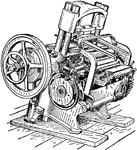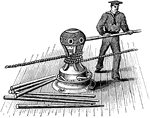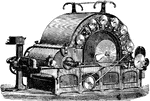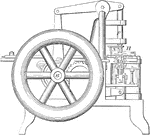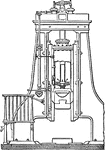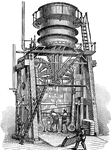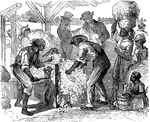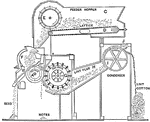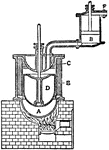
Stirling's Air Engine
"A form of air-engine which was invented in 1816 by the Rev. R. Stirling is of special interest as embodying…
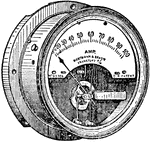
Hot-wire Ammeter
"Hot-wire instruments working on the sag principle can be used in any position if properly contructed,…

Archime' dean Screw
A cylinder with a triple threaded screw in a water tight case that revolves ater to the top for the…
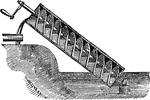
Archimedes Screw
"A machine for raising water, said to have been invented by Archimedes, during his stay in Egypt for…
The Atwood Machine
The Atwood machine (or Atwood's machine) was invented in 1784 by Rev. George Atwood as a laboratory…

Atwood's Machine
"Atwood's Machine. This difficulty has however been overcome by a curious piece of machinery invented…
Atwood's Machine
"Machine designed by Atwood to allow the measurement and calculation of the velocities of falling bodies…

Automatic Oil Muffle Furnace
"A muffle furnace, employed for annealing, hardening, and tempering." —Encyclopedia Britannica,…
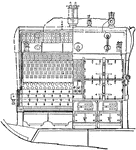
Babcock and Wilcox Water-tube Boiler
Babcock and Wilcox Water-tube Boiler, section at AB-front elevation

Conveyer Belt
A belt conveyor consists of two or more pulleys, with a continuous loop of material - the conveyor belt…

Dual Pulley Conveyer Belt
A belt conveyor is made up of two or more pulleys, with a continuos belt running through it. One or…

Blake Ore Breaker
This illustration shows a Blake Ore Breaker (stone crusher), used in a gold stamp mill. This crusher…

Blowing-Machine
"An American machine, introduced into England by Mr. Ellis. It consists of an iron cylindrical casing…

Boring Tool
James Watt found the boring tool in his blacksmithing to be very difficult. "A young manufacturer named…
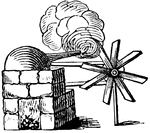
Brancas Engine
"In 1629 Giovanni Branca, an Italian, contrived a machine which was employed for the various purposes…
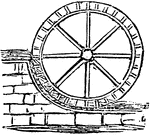
Breast-wheel
"A wheel turned by the force of water which is level with its centre." — Williams, 1889
Telegraph Cable
Telegraph cable laid at the bottom of the ocean or through festoons, allowing for gradual setting.

Chlorination Barrel
The chlorination process in gold extraction employs large vats or revolving barrels, the material inside…

Chlorination Barrel (End Section)
The chlorination process in gold extraction employs large vats or revolving barrels, the material inside…
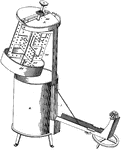
Butter Churn
The butter churn is a device used to convert cream into butter. This is done through a mechanical process,…
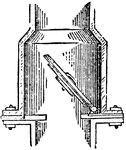
Clack-valve
"A valve in pumps with a single flap, hinged at one edge, and consisting of a plate of leather a little…

Clevis
A clevis assembly including a clevis body, a clevis loop pivotally mounted on the clevis body, a collar,…

Coal-cutting Machine
"This machine consists essentially of a horizontal piston and cylinder engine fixed upon a platform…

Cog-wheel
"A small projection in machinery, used to impart motion. C. wheel, a wheel having cogs on its…
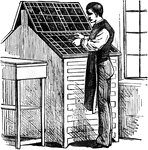
Compositor
"The art of printing from movable types is of comparatively modern origin, only four hundred years having…
Condenser
"The operation of the condenser is the reverse of that of the air pump, and is a much more simple machine.…
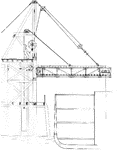
Apron Pan Conveyor
"General arrangement of Apron Conveyor for loading vessels, pans are 48 inches wide, 12 inches pitch,…
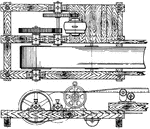
Belt Conveyor
An diagram showing a belt conveyor from the top and side illustrating the arrangement of the drive end.
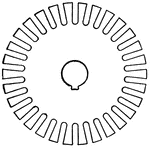
Solid core disk
"The metal cut away near the center reduces the weight and provides passages for air circulation." —…
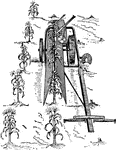
Cutting Mechanism of Corn-Harvester
This machine cuts the corn and binds the stalks in bundles ready for shocking.
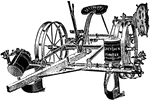
Check-Row Corn-Planter
A check-row corn-planter, which plants two rows at once and rows the corn both ways.
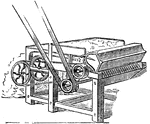
Cotton Gin
A Cotton Gin (short for cotton engine) is a machine that quickly and easily separates the cotton fibers…
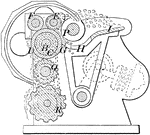
Cotton Gin Machine
This mechanical drawing of a cotton gin depicts internal moving parts, where the machine was intended…


